How to Measure for Carpet: Easy Steps to Save Money and Time

Accurate carpet measurements matter more than you might think, and miscalculations can get pricey.
Measurement errors create real problems. Ordering excess carpet wastes money, while insufficient amounts lead to frustrating delays. Professional installers add 10 centimeters to their length and width measurements because they understand wall irregularities and cutting requirements.
Carpet measurement challenges vary widely. Rooms larger than 5 meters need special attention, and stairs present unique complexities with their average of 13 steps. Your project's success depends on precise measurements, whether it's a straightforward rectangular room or an L-shaped space.
This piece outlines the steps you need to measure carpet with confidence. You'll learn everything from simple room calculations to managing complex areas like stairs and landings. Perfect measurements will help ensure your carpet installation goes smoothly from start to finish.
Essential Tools and Preparation for Carpet Measurement
Let's start by gathering all the tools you need to measure your carpet accurately. You will need:
-
A quality steel tape measure or laser measuring tool for precision
-
Paper and pencil for recording measurements
-
Calculator for area calculations
-
Floor plan (if available)
A precise room sketch will help you avoid measurement errors. Draw a top-view diagram of your space and mark all doorways, alcoves, and built-in features. Your drawing should include the positions of all windows and doors because these details are vital during installation.
Standard carpet widths play a significant role in proper planning. Here are the common carpet roll sizes you should know:
|
Region |
Standard Widths |
|
UK/Europe |
4m and 5m |
|
US/Canada |
12ft and 15ft |
Commercial spaces often use 6-foot-wide carpet rolls, especially when you have to transport materials in high-rise buildings. You can save money by determining the carpet's direction - it should run along the room's longest dimension.
Note that you should add 10 centimeters to each measurement to allow for cutting and installation adjustments. This extra margin will give you enough material during installation.
Basic Room Measurement Techniques
Let's look at the simple techniques to measure your carpet area. This guide will help you get accurate measurements every time.
Measuring rectangular and square rooms
Square and rectangular spaces need width and length measurements at their widest points. Here's how to do it:
-
Measure the width (including alcoves and recesses)
-
Record the length (including door areas)
-
Take multiple measurements since rooms aren't perfectly square
-
Use the largest measurements to calculate
Handling doorways and alcoves
Doorways need extra attention when measuring. You should measure right into the door frames to prevent gaps. The same goes for alcoves and bay windows - measure from the widest points to get complete coverage.
Using a carpet calculator for accuracy
A carpet calculator makes the math easier. You'll need these measurements:
|
Measurement |
Details |
|
Room Width |
In meters from wall to wall |
|
Room Length |
In meters at longest point |
|
Price per m² |
Optional for cost estimate |
The calculator rounds measurements to standard carpet widths of 4 or 5 meters. Rooms under 400cm wide round up to 400cm, and widths between 400-500cm go up to 500cm.
Note that you should add 10cm to both length and width measurements to handle wall variations and cutting adjustments. This extra space will give a perfect fit during installation.
Measuring Complex Areas and Stairs
Accurate measurements are crucial when dealing with complex areas. This piece offers a detailed, step-by-step approach to help you succeed.
How to measure carpet for stairs and landing
The quickest way to measure stairs starts at the top and moves downward. Here's a proven approach:
-
Count total straight stairs and winders separately
-
Measure one standard stair (riser and tread)
-
Calculate width at widest points
-
Measure each winder individually
-
Include landing measurements
Note that measuring from the top of the stairs downward determines the pile direction.
Tackling L-shaped and irregular rooms
Complex shapes become manageable when you divide irregular rooms into smaller sections. L-shaped rooms need this approach:
|
Section |
Measurement Method |
|
Main Area |
Length × Width |
|
Extension |
Length × Width |
|
Total |
Sum both areas |
This method proves reliable, but adding 5% to the total area provides a safety margin.
Measuring built-in features and obstacles
After completing simple measurements, you should account for built-in furniture and obstacles. Notwithstanding that, these areas should stay in your total measurements. You need to measure around permanent fixtures such as:
-
Bay windows
-
Radiators
-
Fireplaces
-
Built-in cupboards
A shortage of carpet during installation might occur if you skip this step. Doorway measurements should extend from the inside edges to ensure adequate coverage.
Smart Ways to Reduce Carpet Waste
Smart planning will reduce carpet waste by a lot. Research shows waste drops by more than 35% with the right approach. Let me share some proven ways to get the most out of your carpet installation.

Planning carpet direction and seams
Note that all carpets in your building should point in the same direction. Your bedroom carpet faces west? Keep that direction throughout your home to maintain design flow. This is a vital part of:
-
Getting consistent texture
-
Making patterns line up
-
Creating smooth flow between rooms
Calculating optimal carpet width
Carpets usually come in 4-meter and 5-meter widths. Here's what to think over when picking the right width:
|
Room Type |
Recommended Width |
|
Standard Rooms |
4 meters |
|
Large Spaces |
5 meters |
|
Commercial Areas |
6 meters |
Tips to minimize material wastage
L-shaped rooms need special attention. Use one carpet length to create the L-shape and save the leftover pieces for smaller areas like hallways. Here's how to make the most of your carpet:
-
Put seams where people walk less
-
Keep seams away from areas with chair movement
-
Place seams in the same direction as light to hide them better
-
Save carpet offcuts for narrow spaces
Stairs need a different approach. The quickest way is to cut carpet width into strips down the length. Join them where the riser meets the step. This cuts waste and keeps the pile direction consistent throughout your space.
Common Measurement Mistakes to Avoid
Let's get into the most common measurement mistakes that can mess up your carpet installation.
Frequent measurement errors
We see most errors happening around doorway measurements. People often forget to measure to the center of doorways. This oversight means you might not have enough carpet to properly tuck under doors.
|
Common Error |
Effect |
|
Incorrect doorway measurement |
Poor transitions |
|
Neglecting room transitions |
Uneven flow between spaces |
|
Door clearance issues |
Door movement problems |
Double-checking your calculations
Accuracy in measurements helps avoid mistakes that can get pricey. Here's our proven way to verify:
-
Measure each dimension multiple times
-
Check all alcoves and recesses
-
Add 10-15% extra for irregularities
-
Factor in pattern repeats if you're using patterned carpets
Professional help makes sense
Some situations need professional measurement services:
-
Complex or irregular room shapes
-
Multi-level staircases
-
Rooms with unusual features
-
Patterned carpet installation
Professional measurers spot problems like uneven sub-floors and give great advice about carpet types that work best in your space. Their experience helps catch installation challenges you might miss on your own.

How to measure for carpet on stairs?
We need to pay attention to specific components when measuring stairs for carpet. Let's examine this process step by step.
-
Start at the top of your staircase and work downward:
-
Measure tread depth (horizontal part)
-
Record riser height (vertical part)
-
Include nose measurement (edge overhang)
The process requires specific allowances for accurate measurements:
|
Stair Component |
Standard Size |
Required Allowance |
|
Tread & Riser |
Actual size |
+5 cm |
|
Width |
Wall to wall |
+5 cm each side |
Your per-step measurements should be multiplied by the total number of stairs. A single step with a tread depth of 22 cm and riser height of 22 cm would need 44 cm in total length.
Each step's width needs measurement from wall to wall. Winding stairs require measurements at each step's widest point. Standard stairs typically measure around 85 cm in width, but your specific measurements should always be verified.
Stairs with overhanging nosings are easier to carpet when working upward because this method allows better tucking and stapling underneath. Note that the carpet pile must run downward from the stair's top.
How to measure for carpet in meters?
Metric measurements give you the most accurate carpet calculations. Let me share the quickest way to get precise measurements in meters:
-
Record all measurements in meters and centimeters
-
Add 5cm to both length and width for cutting allowances
-
Measure maximum length and width at the widest points
-
Round up measurements to standard carpet widths (4m or 5m)
You can calculate the total area by multiplying width and length measurements. To cite an instance:
|
Example Room |
Calculation |
Total Area |
|
3.75m × 4.20m |
Round to 4m × 4.25m |
17 square meters |
The cost estimate comes from multiplying your total square meters by the price per square meter. A carpet priced at £15.99 per square meter in a 17m² room would cost: £15.99 × 17m² = £271.83
We suggest taking two measurements for both length and width and using the largest measurement. This helps with rooms that aren't perfectly square. Here's what you need to do with irregular spaces:
-
Convert centimeters to meters by moving the decimal point two digits left
-
Round final measurements to the nearest centimeter
-
Use a calculator for precise multiplication
Proper measurement helps you avoid material shortages or excessive waste. Standard carpet widths come in either 4 or 5 meters, so plan your measurements with these dimensions in mind.
How to measure for carpet tiles?
Calculating carpet tile requirements just needs precision and proper planning. Our measurements for carpet tiles follow a straightforward approach that works with rooms of any shape.
Here's our proven method for accurate tile calculations:
-
Measure room length × width for simple square/rectangle spaces
-
Split irregular rooms into manageable sections
-
Calculate each section separately
-
Add measurements together for total area
|
Tile Type |
Standard Size |
Typical Usage |
|
Square |
50cm × 50cm |
Office spaces |
|
Rectangle |
18" × 36" |
Corridors |
|
Large Format |
24" × 24" |
Open areas |
We recommend adding 10-15% extra tiles to your calculations. This buffer will give you enough for cuts, mistakes, and future replacements. Square or rectangular rooms need 5-10% waste allowance, but rooms with curved or irregular walls need extra attention.
A room layout drawn on paper helps before placing your order. The widest points should be measured from wall to wall. Some spaces might need more tiles despite careful planning. Having a few extra tiles is better than running short during installation.
Triangular rooms need special calculations - multiply the base length and height together, then divide by two. Note that carpet tiles are produced per order, so any extra tiles ordered later might not perfectly match your original batch.
How to measure for carpet uk?
The UK carpet measurement system follows specific industry standards that set it apart from other regions. You need to think over several unique factors while measuring carpet in UK homes.
British carpet measurements have their own set of requirements. Standard carpet widths come in 4m and 5m sizes. Measurements use meters and centimeters. The system accounts for building regulations that apply to stairs and landings. Local installation guidelines are the foundations of proper fitting.
UK carpet prices work on a square meter basis, similar to other measurements. The British market shows clear patterns:
|
Room Type |
Recommended Width |
Common Usage |
|
Standard Bedroom |
4m |
Most UK homes |
|
Living Room |
5m |
Larger spaces |
|
Hallway |
2m or 4m |
Depending on width |
British homes' unique architecture plays a big role in measurements. Period properties with bay windows and irregular room shapes need extra attention. UK suppliers stock both 4-meter and 5-meter widths. Planning your measurements around these standard sizes is a vital part of the process.
Multi-level British properties need separate measurements for each floor. Areas where different flooring types meet deserve special focus. Knowledge of these UK-specific requirements helps achieve accurate measurements that match British standards perfectly.
How to measure for carpet installation?
The right preparation of your space will give a precise carpet measurement for installation. Here are the key steps you need for accurate measurements and a successful installation.
We cleared the room first to get accurate measurements. Here's what you should do:
-
Remove all furniture and obstacles
-
Clean the subfloor
-
Check for any floor damage
-
Document existing floor heights
You'll need these specific tools to measure with precision:
|
Tool |
Purpose |
|
Tape Measure |
Simple measurements |
|
Laser Tool |
Better accuracy |
|
Notepad |
Recording dimensions |
|
Calculator |
Area calculations |
Taking measurements twice helps confirm accuracy. Multiple readings across each room are necessary since walls rarely run perfectly parallel.
The best practice adds 10cm to both length and width measurements to allow proper installation. This extra space helps with:
-
Wall irregularities
-
Cutting adjustments
-
Seam placement
-
Door clearances
DIY measurements work in simple spaces, but professional measurement services work better for complex areas or pattern-matched carpets. Professional measurers can identify potential installation challenges and guide you through carpet selection and placement.
How to measure for carpet stair treads?
Accurate measurements play a vital role in fitting carpet stair treads. You need to pay close attention to each component to get the right fit.
We need three key measurements for each tread:
-
Tread depth (horizontal surface)
-
Riser height (vertical surface)
-
Nosing overhang (front edge)
Our recommended standard measurements ensure the best fit:
|
Component |
Measurement |
Extra Allowance |
|
Tread Width |
Wall to wall |
+2.5cm each side |
|
Tread Depth |
Front to back |
+5cm total |
|
Nosing |
Over edge |
+2cm minimum |
Each tread needs individual measurement to ensure precise fitting, especially when you have homes with varying tread sizes. Older homes often show inconsistent dimensions between steps, so we measure each tread separately.
The process starts with measuring the visible tread surface and adding the nosing measurement. Homes with existing carpet require measurements from the base of one riser to another, including the nosing curve.
Here's what you need for precision:
-
Take multiple width measurements
-
Record the largest measurement
-
Include extra material for pattern matching
-
Measure both edges and center points
Note that carpet pile direction matters during installation. The pile should point downward to achieve optimal wear and appearance.
How to measure for carpet runner?
Carpet runners need special measurement techniques that differ from regular carpet installations. Here's how to get your runner dimensions perfect.
We needed to figure out the right width first. These measurements work best:
|
Location |
Standard Width |
Minimum Side Gap |
|
Hallway |
70-90cm |
10-15cm per side |
|
Stairs |
60-80cm |
5-10cm per side |
The total length calculation involves:
-
Recording the full path length
-
Adding 30cm for each turn or landing
-
Including extra length to secure ends
-
Adding 10% to match patterns
Hallway runners look best with equal space on both sides. Curved areas need measurements right down the middle of your planned runner path.
These clearances work perfectly:
-
15cm from walls in wide hallways
-
10cm from walls in narrow spaces
-
2.5cm from door frames
-
5cm extra at each end
The right measurements will give a functional and beautiful result. Masking tape helps mark your intended runner path. This simple trick lets you see the final placement and double-check your measurements before installation.
How to measure for carpet calculator?
Need an easier way to measure your carpet? A carpet calculator makes the whole process simple. Let me show you how this helpful tool works.
We need specific details to get accurate results with carpet calculators. Here's what you should enter:
-
Input your room dimensions:
-
Width in meters (wall to wall)
-
Length in meters (longest point)
-
Price per square meter (optional)
-
|
Calculator Feature |
Purpose |
|
Room Addition |
Multiple room calculations |
|
Width Options |
4m or 5m standard sizes |
|
Price Estimate |
Total cost calculation |
The calculator adjusts your measurements to standard carpet widths automatically. Rooms under 400cm wide get rounded up to 400cm, and widths between 400-500cm get rounded to 500cm.
You'll get the best results when you:
-
Add 10cm to both length and width measurements
-
Include doorway depths in your calculations
-
Measure from the furthest points
The calculator does all the complex math and multiplies the price per square meter by the total area to give you a complete cost estimate. Most calculators let you add measurements for multiple rooms, which works great when you're planning carpet for your entire house.
Many online calculators can handle different room shapes too. They work with rectangular, circular, and pentagonal spaces, which makes measuring complex rooms much easier.

How to measure for carpet stairs and landing?
You need a step-by-step process to measure stairs and landing together. We have created a detailed method that will give accurate results and save time.
We started with the landing area first. Here's what works best:
-
Measure landing width and length
-
Add 15cm allowance for each measurement
-
Record total square meters
-
Connect measurements to staircase
The standard allowances we use work well:
|
Area |
Required Allowance |
|
Landing Edges |
15cm per side |
|
Stair Joins |
10cm per join |
|
Corner Turns |
20cm extra |
The landing measurement links directly to your stair calculations. Here's what you should think about:
-
Measure from the top edge of the top step
-
Include any quarter landings
-
Account for direction changes
-
Watch the pile direction flow
The transition point between stairs and landing needs special care. Extra material at these points will give proper pattern matching and uninterrupted installation.
Measuring from the landing down works better than starting from the bottom. This helps you keep the pile direction consistent and allocate materials correctly for both areas.
How to measure for carpet runner on stairs?
A perfect stair runner installation starts with precise measurements. Years of experience have taught us that good planning creates an elegant staircase.
The first step is to pick your runner width. Here are our recommendations for standard staircases:
|
Stair Width |
Runner Width |
Side Gaps |
|
90cm |
60cm |
15cm each |
|
100cm |
70cm |
15cm each |
|
120cm |
80cm |
20cm each |
The length calculation needs these steps:
-
Measure from the back of each step to the nose
-
Add the riser height
-
Multiply by total steps
-
Add 30cm for each landing turn
-
Include 15cm at top and bottom
Pattern matching needs extra attention. We add 10% extra length to patterned runners that will give a proper arrangement at each step.
Everything in a good measurement includes:
-
Center positioning on each step
-
Consistent side gaps
-
Secure anchoring points
-
Direction changes at landings
Accurate measurements are the foundation of successful runner installation. Complex staircases with turns or varying widths need separate measurements for each section to get the best results.
The pile direction should always run down the stairs to maximize wear and appearance. This method has ended up giving us the most professional-looking results in our installations.
How to measure for carpet runner on stairs?
The difference between a professional-looking stair runner and an amateur installation comes down to precise measurement. We've learned that good planning helps avoid common pitfalls.
Let's get into the measurements you'll need:
|
Component |
Measurement Guidelines |
Typical Allowance |
|
Width |
75% of stair width |
12-15cm each side |
|
Length |
Riser + tread + 5cm |
Per step |
|
Landing |
Full length + 30cm |
Turn allowance |
These steps will give a perfect runner measurement:
-
Record total stair width
-
Calculate desired runner width
-
Measure each step (riser + tread)
-
Add turning allowances
-
Include pattern repeat length
Your runner should have equal space on both sides to create a balanced look. The standard runner width should be 75-80% of your total stair width.
The total length calculation starts from the top riser, goes over the nose, and extends down to each step's base. A typical 13-step staircase needs an extra 30cm for secure anchoring at both ends.
Pattern matching needs special attention in runners. We've found that 15% extra length gives us the best pattern alignment at each step. This extra allowance has helped us achieve perfect installations consistently.
How to measure a room for carpet?
Want to measure your room for new carpet? We've learned that getting the details right makes all the difference.
The best way to get accurate measurements is to clear out your room completely. Start from the longest wall and work your way across the space step by step.
Here's a simple guide to help you measure:
|
Measurement Area |
Required Action |
Extra Allowance |
|
Room Width |
Measure at 3 points |
Add 10cm |
|
Room Length |
Measure at 3 points |
Add 10cm |
|
Doorways |
Include threshold |
Add 5cm |
|
Bay Windows |
Measure at widest |
Add 15cm |
Take your measurements in a clockwise direction and note these key features that affect carpet fitting:
-
Built-in wardrobes
-
Fireplace hearths
-
Room transitions
-
Radiator pipes
A diagonal measurement across the room helps check if your walls are square. This quick check prevents problems during installation.
Drawing a rough sketch of your measurements helps you visualize the space and plan the carpet's direction. Mark all permanent fixtures and their distances from walls. This ensures your final calculations capture every detail of your room's layout.
People Also Asked
How do I calculate how much carpet I need?
To calculate carpet needs, measure the room’s length and width in feet or meters. Multiply these for the total area. Add 10% extra for waste and pattern matching. For irregular rooms, divide into rectangles and calculate separately.
How much carpet do I need for a 12x12 room?
A 12x12 room requires 144 square feet of carpet. Add 10% for waste, totaling about 158 square feet. Always round up when purchasing.
How do you calculate carpet area?
Measure the room’s length and width, then multiply. For a 10x8 foot room, you need 80 square feet (10 x 8 = 80). Include closets and alcoves in measurements.
How much carpet for 13 stairs in the UK?
Typically, 5-6 square meters of carpet are needed for 13 UK stairs. Measure each step’s tread (depth) and riser (height), multiply by width, and sum all steps for precision.
How do you measure carpet per m2?
Calculate room area in square meters. Measure length and width in meters, then multiply. A 4x3 meter room needs 12 m2 of carpet (4 x 3 = 12).
How many square meters is a 12x12 room?
A 12x12 room is approximately 13.38 square meters. Convert by multiplying square footage by 0.0929 (144 sq ft x 0.0929 = 13.38 m2).
What is the best measurement for carpet?
Square meters or square feet are best, depending on location. UK and Europe use square meters; US uses square feet. Always include extra for waste and pattern matching.
How much flooring do I need for a 12x12 room?
A 12x12 room needs 144 square feet of flooring. Add 10% extra for cuts and waste, totaling about 158 square feet.
How do I know my area carpet size?
Measure room length and width at widest points. Multiply for square footage. For irregular shapes, divide into rectangles and triangles, calculate separately, then sum.
How to calculate square meter to carpet area?
Measure room length and width in meters. Multiply for square meter area. A 5x4 meter room has 20 square meters of carpet area (5 x 4 = 20).
Floor and Room Measurements
How to calculate floor area?
Measure room length and width in the same unit (feet/meters). Multiply these. For irregular rooms, divide into rectangles, calculate each, then sum.
How to calculate area of room?
Measure room length and width in the same unit. Multiply these. A 15x12 foot room has 180 square feet area (15 x 12 = 180).
How is carpet cost calculated?
Multiply total square footage/meters by price per unit. Include costs for underlay, installation, old flooring removal. Add 10% extra for waste and pattern matching.
Is carpet area and floor area the same?
No, they often differ. Floor area includes all space within walls. Carpet area excludes built-in fixtures, usually slightly less than total floor area.
How do you calculate the cost of carpeting a room?
-
Measure room area in square feet/meters.
-
Add 10% for waste.
-
Multiply by carpet price per unit.
-
Add costs for underlay, installation, additional services.
How to find the area of a carpet?
Measure carpet length and width in the same unit. Multiply these. An 8x6 foot carpet has 48 square feet area (8 x 6 = 48).
How to calculate area?
Multiply length by width. For irregular shapes, break into smaller rectangles or triangles, calculate each, then sum results.
How to measure for carpet in meters?
-
Measure room length and width in meters.
-
Multiply for area in square meters.
-
Add 10% for waste and pattern matching.
-
Round up when purchasing.
What is the difference between covered area and carpet area?
Covered area includes all built-up space, including walls and balconies. Carpet area is usable floor space, excluding walls and built-in storage. Carpet area is typically 10-20% less.
How many feet is 300 sq ft?
300 square feet equals approximately 17.32 feet by 17.32 feet (√300 ≈ 17.32). It could be any length-width combination multiplying to 300, like 20x15 feet.
Carpet Installation and Measurement Tips
How to calculate carpet area?
-
Measure room length and width in feet/meters.
-
Multiply for total area.
-
Subtract areas not needing carpet (built-ins).
-
Add 10% for waste and pattern matching.
How to properly measure for carpet?
-
Use a tape measure for accuracy.
-
Measure room’s longest length and width.
-
Include closets and alcoves.
-
Measure doorways and hallways separately.
-
Sketch room with all measurements.
Can I install carpet myself?
While possible, professional installation is recommended. DIY risks improper stretching, visible seams, and voided warranties. Professionals have specialized tools and skills.
How to measure a room for carpet calculator?
-
Measure room length and width in feet/meters.
-
Enter measurements into calculator.
-
Add additional areas (closets, alcoves).
-
Calculator provides total needed, often including 10% extra.
How is carpet measured and sold?
Carpet is sold by square foot or square meter. Available in standard widths (12-15 feet US, 4-5 meters UK), you purchase needed length. Some offer pre-cut room-size rugs.
How many square meters are in a lineal metre of carpet?
Depends on carpet width. For 4-meter wide carpet, one lineal meter equals 4 square meters (4m x 1m = 4m²). For 5-meter width, it’s 5 square meters.
How do I calculate how much flooring I need?
-
Measure room length and width.
-
Multiply for total area.
-
Add 10% for cuts and waste.
-
For wood flooring, add 15-20% extra.
How much is carpet per square metre?
Prices vary by quality, material, brand. Basic carpets cost £5-£20 per square meter, high-end options £30-£100+. Factor in underlay and installation costs.
Do you need underlay for carpet?
Yes, underlay is highly recommended. It provides cushioning, insulation, prolongs carpet life, improves comfort, reduces noise, and hides minor subfloor imperfections. Most warranties require it.
How many meters of carpet do I need for 12 stairs?
Typically 5-6 meters of carpet for 12 stairs. For precision, measure each step’s tread (depth), riser (height), width, sum these, plus extra for waste.
Is it cheaper to carpet stairs?
Carpeting stairs is often more expensive than flat surfaces due to labor-intensive installation. However, it’s cheaper than some hardwood options and provides safety benefits.
What is the formula to measure carpet?
Basic formula: Area = Length x Width
Measure longest length and width, multiply for square footage/meters. Add 10% for waste and pattern matching.
What is the difference between floor area and carpet area?
Floor area includes all space within walls, including under built-ins. Carpet area is usable floor space, excluding built-ins. Carpet area typically 10-20% less than floor area.
How do you convert carpet area to square meters?
If in square feet, divide by 10.764 for square meters. Example: 500 sq ft ≈ 46.45 sq meters (500 ÷ 10.764 = 46.45). If already in square meters, no conversion needed.
How much to carpet 3 bedrooms?
The cost to carpet 3 bedrooms varies widely based on room sizes, carpet quality, and location. On average, expect to pay between $2,000 to $4,000 for mid-range carpet and installation. Factors like carpet material, padding quality, and any necessary floor preparation can significantly impact the final price.
What is a carpeting calculation?
A carpeting calculation involves measuring the room's dimensions to determine the amount of carpet needed. Multiply the room's length by its width in feet to get the square footage. Add 10% to this figure for waste and pattern matching. For irregular-shaped rooms, divide the area into rectangles, calculate each separately, and sum the results.
What size carpet for a 10x10 room?
For a 10x10 room, you'll need approximately 100 square feet of carpet. However, it's wise to purchase about 110 square feet to account for waste and proper fitting. This extra allowance ensures enough material for pattern matching and addressing any installation challenges.
How to measure room carpet?
To measure a room for carpet, use a tape measure to determine the length and width at the room's widest points. Multiply these measurements to get the square footage. For irregular shapes, break the room into rectangles, measure each separately, and add the results. Don't forget to measure closets and add 10% for waste.
How many feet are in 1 meter square?
One square meter is equivalent to approximately 10.764 square feet. This conversion is crucial when dealing with international carpet measurements or comparing products from different regions. Always double-check measurements and conversions to ensure accurate ordering.
How to fit carpet yourself?
Fitting carpet yourself requires careful planning and the right tools. Start by removing old flooring and preparing the subfloor. Install tackless strips around the room's perimeter, leaving a small gap at doorways. Lay and secure the underpad, then roll out the carpet, allowing extra for trimming. Use a knee kicker to stretch the carpet onto the tackless strips, working from the center outward. Trim excess with a sharp utility knife.
How much does it cost to carpet a 12x12 room in the UK?
The cost to carpet a 12x12 room (approximately 144 square feet or 13.4 square meters) in the UK can vary significantly based on several factors. As of 2025, you can expect to pay between £300 to over £800 for carpeting this size room
The total cost depends on:
-
Carpet quality: Budget options start around £5-£10 per square meter, while luxury carpets can cost £30-£55 per square meter
. -
Underlay: Prices range from £2-£8 per square meter, depending on quality
. -
Fitting costs: Professional installation typically adds £36-£108 to the total, depending on the complexity of the job
. -
Additional materials: Grippers, adhesives, and other accessories can add £20-£60 to the overall cost
.
For a mid-range carpet in a 12x12 room, you might expect to pay around £400-£600, including materials and fitting. However, opting for higher-end materials or dealing with complex room layouts can push the price towards the upper end of the range or beyond.
To get the best value, consider comparing quotes from multiple suppliers and fitters, as prices can vary significantly between providers.
Is carpet cheaper or flooring?
Generally, carpet is often cheaper than hard flooring options like hardwood, tile, or high-quality vinyl. However, the cost comparison depends on the specific types and qualities of materials being considered.
-
Carpet: Ranges from £5 to £55 per square meter, with an average of £15-£25 for mid-range options
. -
Hard flooring: Prices vary widely, but options like hardwood or high-end tile can easily exceed £50 per square meter, not including installation.
While carpet may have a lower upfront cost, it's important to consider long-term factors:
- Durability: Hard flooring often lasts longer than carpet, potentially offering better value over time.
- Maintenance: Carpet may require more frequent cleaning and eventual replacement.
- Property value: Hard flooring can sometimes add more value to a property.
The most cost-effective choice depends on your specific needs, budget, and long-term plans for the space.
How long does it take to install carpet in 3 rooms?
The time required to install carpet in three rooms can vary based on several factors, but generally, you can expect the process to take 1-2 days. Here's a breakdown:
- Room preparation: 1-2 hours per room
- Carpet and underlay installation: 2-4 hours per average-sized room
- Finishing touches: 1-2 hours total
Factors that can affect the timeline include:
- Room sizes and shapes
- The need for furniture removal and replacement
- Complexity of the installation (e.g., stairs, unusual corners)
- Experience level of the installers
Professional carpet fitters can often complete the installation of three standard-sized rooms in a single day. However, for larger rooms or more complex layouts, it might extend into a second day.
To ensure a smooth process, it's advisable to:
- Clear rooms of furniture and belongings before the installers arrive
- Ensure good access to the rooms for the fitters and their materials
Always discuss the expected timeline with your chosen carpet fitter to plan accordingly.
Do carpetright prices include fitting?
Carpetright, a major carpet retailer in the UK, typically offers separate pricing for carpets and fitting. While they do provide fitting services, the cost is usually not included in the advertised carpet prices. Here's what you need to know:
-
Carpet prices: These are generally listed per square meter or square foot and do not include fitting.
-
Fitting service: Carpetright offers professional fitting as an additional service. The cost can vary based on the complexity of the job and the area you live in.
-
Package deals: Occasionally, Carpetright may run promotions that include fitting in the overall price, but this is not their standard practice.
-
Additional costs: Remember that underlay, grippers, and door bars might also be priced separately.
What is the formula for measuring carpet?
The formula for measuring carpet is length x width = square footage. For irregular shapes, divide the room into rectangles, calculate each separately, and sum the results. Always add 10% extra for waste and pattern matching. Measure in feet for US calculations or meters for metric, and round up to the nearest whole number for accurate ordering.
How much m2 carpet do I need?
To determine how many square meters of carpet you need, measure the length and width of your room in meters. Multiply these numbers to get the area. For example, a 4m x 5m room needs 20m2 of carpet. Add 10% for waste, so you'd need 22m2. For complex room shapes, break the space into rectangles, calculate each separately, and sum the results.
How do I measure my room for carpet?
To measure your room for carpet, start by clearing the space of furniture. Use a tape measure to find the length and width at the room's widest points. For irregular shapes, divide the room into rectangles and measure each separately. Don't forget to measure doorways and closets. Write down all measurements and sketch a rough floor plan. Always measure twice to ensure accuracy before ordering your carpet.
How much carpet per square meter?
The amount of carpet per square meter depends on the specific product and manufacturer. Typically, carpet is sold by the square meter or square foot. One square meter of carpet covers exactly one square meter of floor space. However, when ordering, always add 10% extra to account for waste, pattern matching, and potential mistakes during installation. This ensures you have enough material to complete the job properly.
How to measure carpet without unrolling?
To measure carpet without unrolling, check the roll's label for dimensions. Most carpet rolls are 12 feet (3.66 meters) wide, with length varying. Multiply the width by the length to get the total square footage. For partial rolls, measure the roll's diameter and use a carpet calculator tool to estimate the remaining yardage. Always confirm measurements with the seller to ensure you're getting the correct amount for your project.
Can you install carpet yourself?
While it's possible to install carpet yourself, it's a challenging task that requires specific tools and skills. Professional installation is recommended for best results. DIY installation risks improper stretching, visible seams, and reduced longevity. If you decide to self-install, research thoroughly, rent proper tools, and prepare for a time-consuming process. Consider the complexity of your room shape and your DIY experience before making this decision.
What is normal room carpet size?
There's no standard "normal" room carpet size as rooms vary greatly. However, common carpet roll widths are 12 feet (3.66 meters) in the US and 4 meters in many other countries. For a typical bedroom (12x12 feet or 3.66x3.66 meters), you'd need about 144 square feet or 13.4 square meters of carpet. Always measure your specific room and add 10% for waste to determine the exact amount needed for your space.
How do I calculate area?
To calculate area, multiply the length by the width of the space. For a rectangular room, measure the longest wall (length) and the shortest wall (width) and multiply these numbers. The result is the area in square feet or square meters, depending on your measurement unit. For irregular shapes, divide the space into rectangles, calculate each separately, and sum the results for total area.
How to calculate the carpet?
To calculate carpet needs, measure the room's length and width in feet or meters. Multiply these for the square footage or square meters. For L-shaped rooms, divide into rectangles and sum their areas. Always add 10% for waste and pattern matching. Round up to the nearest whole number when ordering. Remember to account for closets, alcoves, and stairs if applicable. Precise measurements ensure you order the right amount of carpet for your project.
How to calculate the area of a room?
To calculate a room's area, measure the length and width at the widest points. Multiply these numbers for square footage or square meters. For irregular shapes, divide the room into rectangles, calculate each area separately, and add them together. Don't forget to include closets and alcoves. Measure twice for accuracy. This calculation is crucial for various home improvement projects, including flooring installation and paint purchases.
What is a good carpet thickness?
A good carpet thickness typically ranges from 1/4 inch to 3/4 inch (6.35mm to 19mm). Thicker carpets (1/2 inch to 3/4 inch) offer more cushioning and luxury but may be harder to clean. Thinner carpets (1/4 inch to 1/2 inch) are easier to maintain and often more durable. The ideal thickness depends on your specific needs, room usage, and personal preference. Consider factors like foot traffic, comfort requirements, and underfloor heating compatibility when choosing carpet thickness.




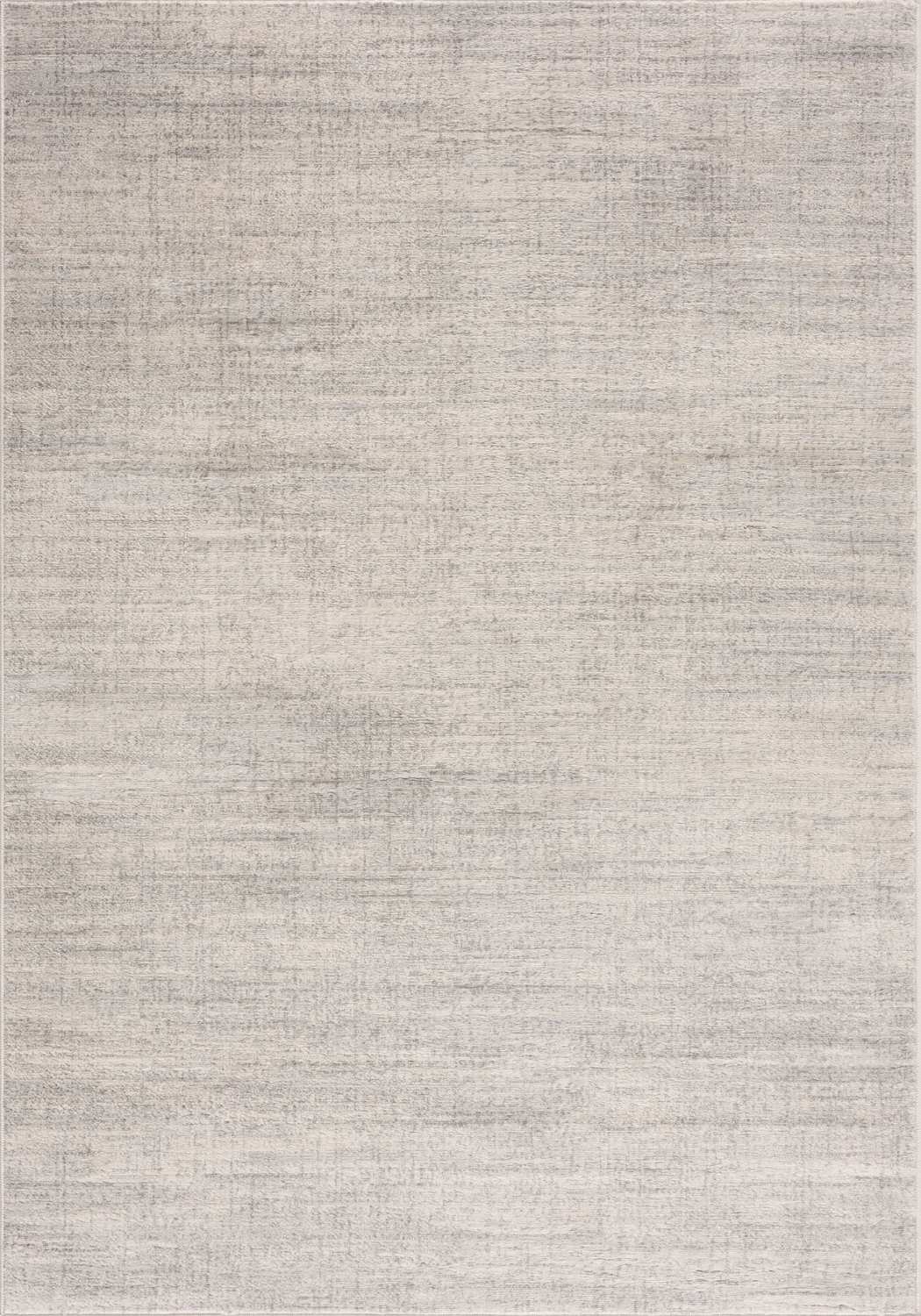
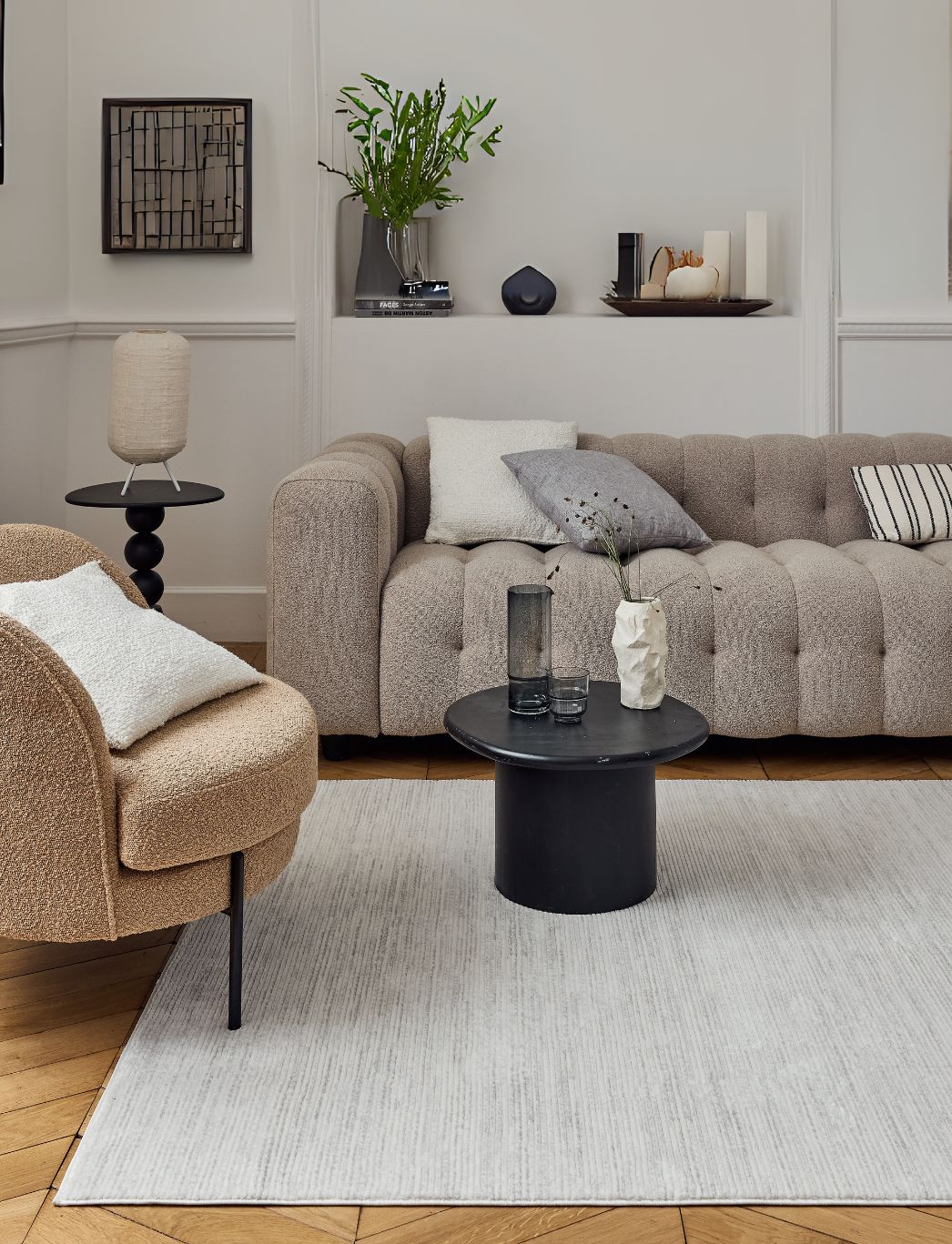
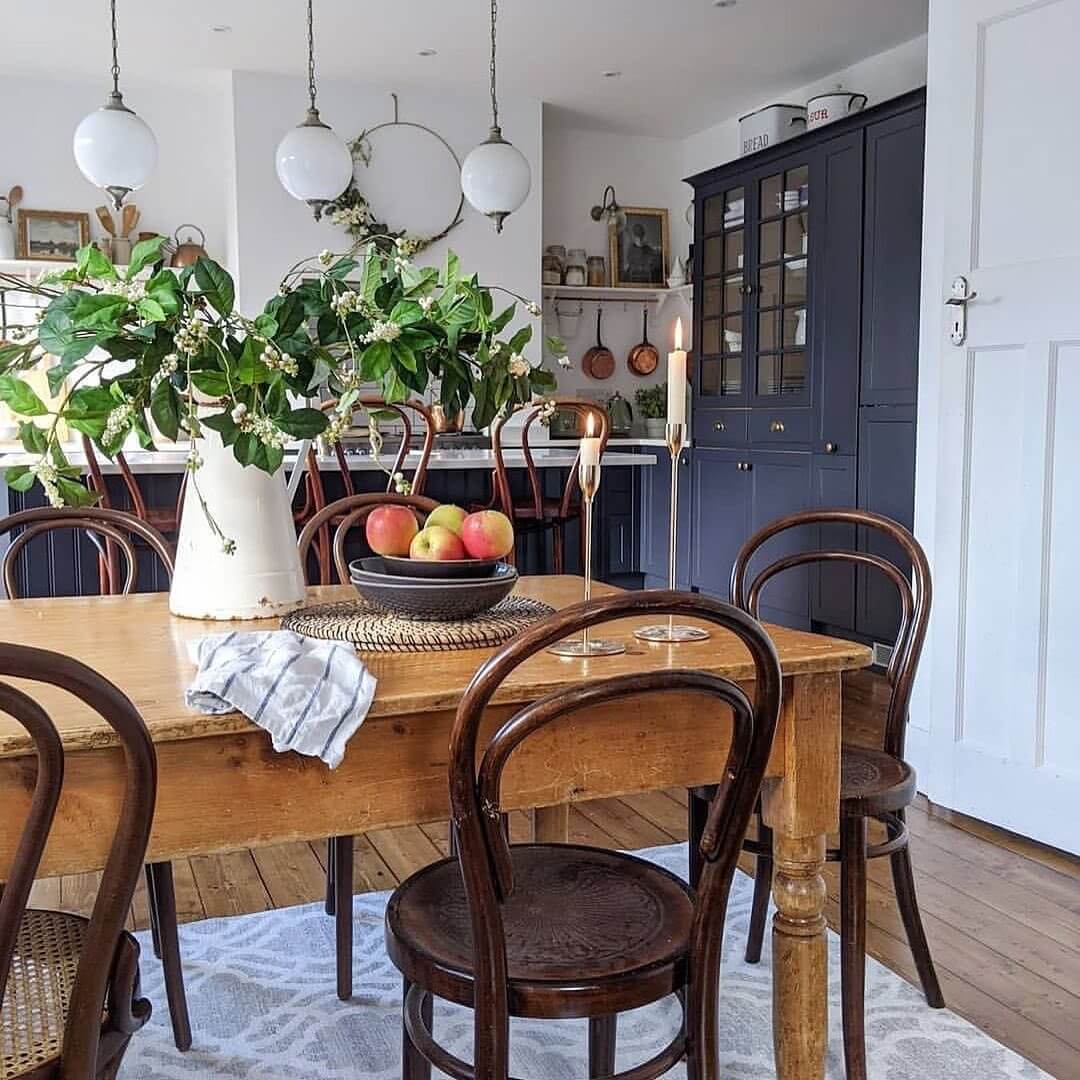
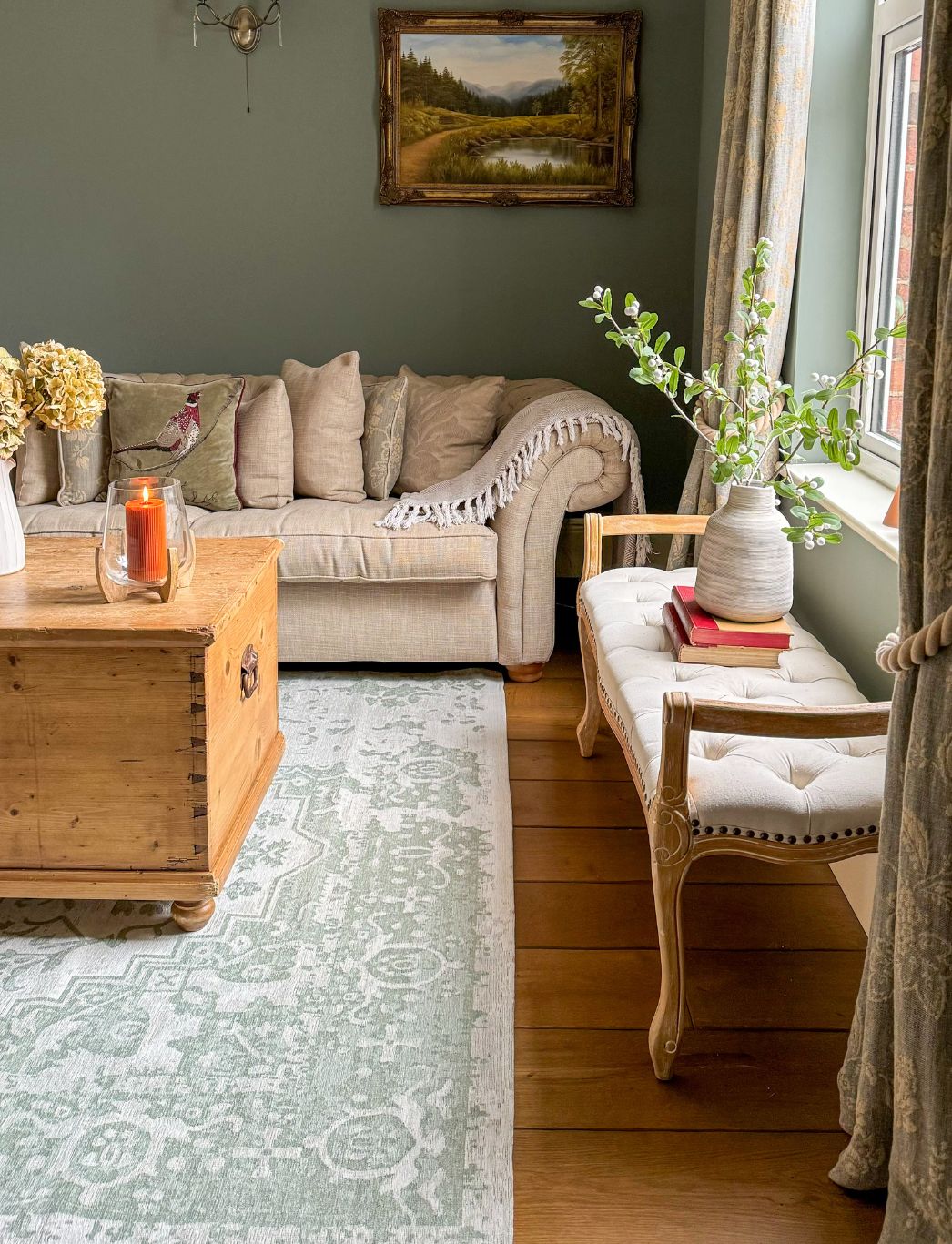
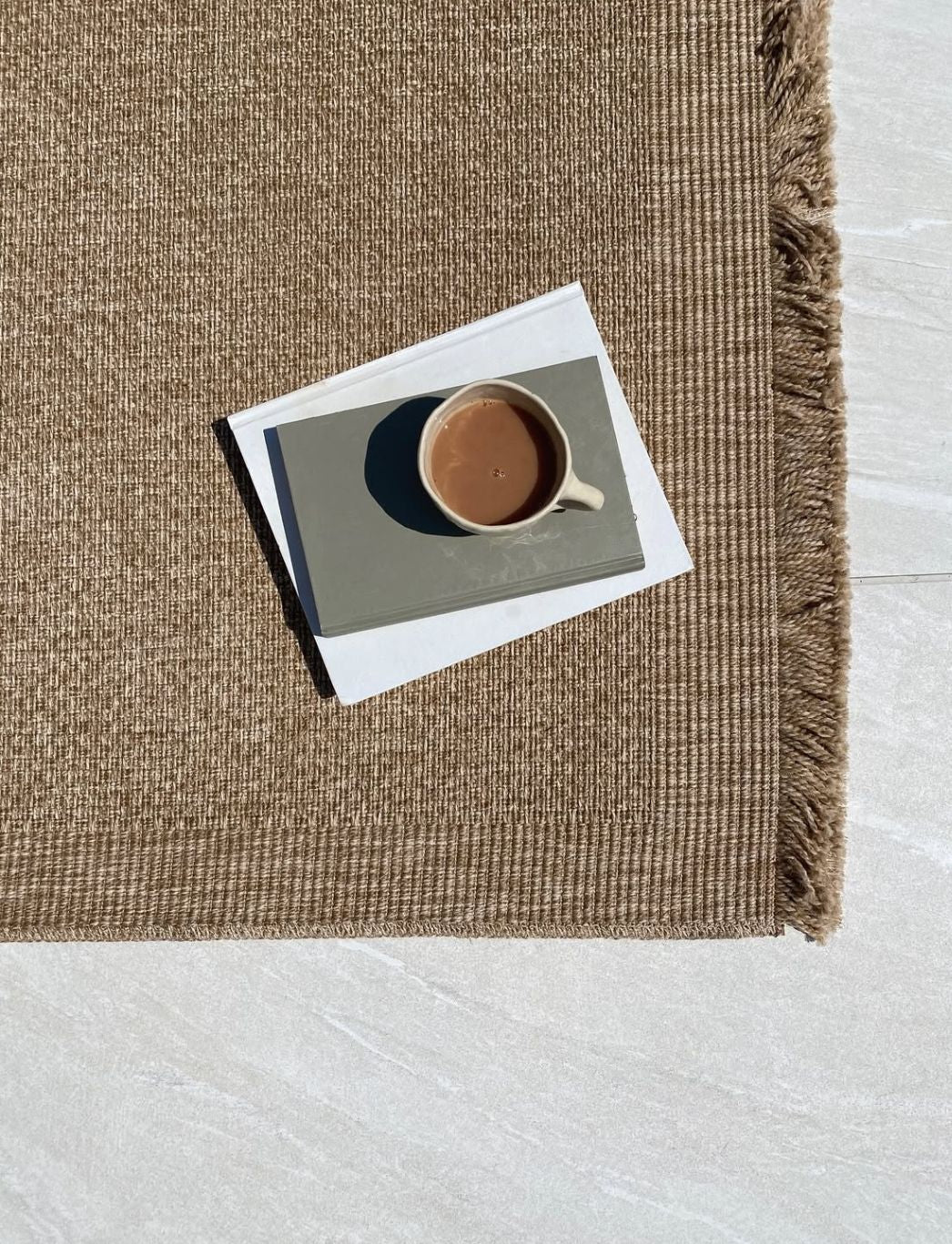
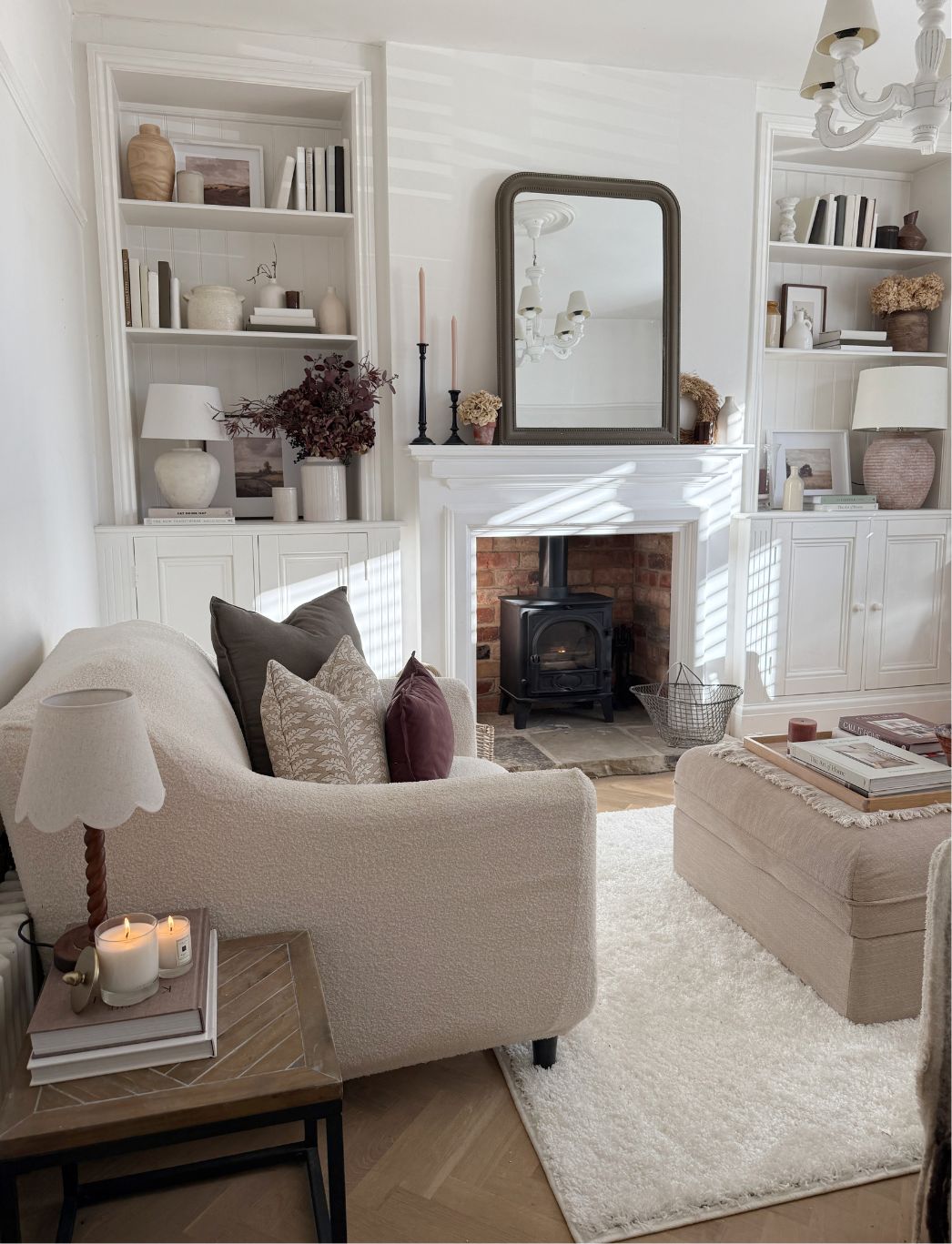
Leave a comment